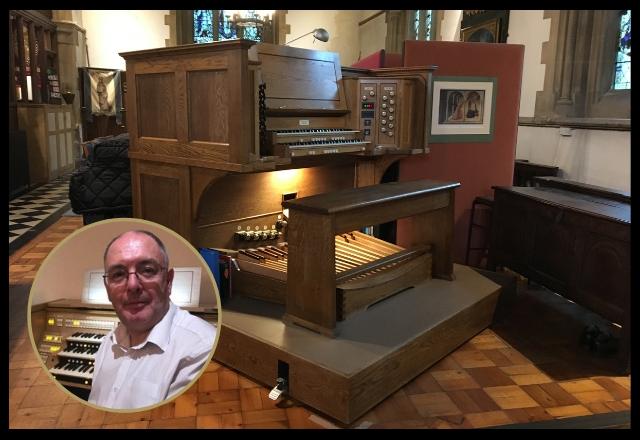David has kindly asked me to introduce myself as the new part-time member of staff based at our Bicester office. Most of my career has been spent in the musical instruments industry, although for five years during the 1990s I worked in the publications department of the Royal School of Church Music, located in the basement of Addington Palace. So maybe I will be familiar though once having taken your phone order for badges and ribbons, Chorister’s Companions, or piles of choral leaflets?
I thought the most interesting way of relating my background would be sharing with you a few of the organs which have played an important part in my life.
Bitten by the organ bug at an early age
I was brought up in Abbots Langley, in south-west Hertfordshire, a village famous through being the birthplace of the only British Pope, Adrian IV. The Norman parish church of St Lawrence the Martyr was devastated by fire in 1969 and I have an early memory of seeing the fire engines in action on an otherwise dark evening.
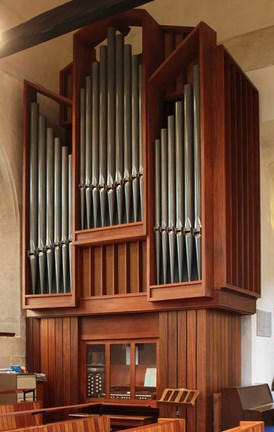
For the refurbished building a new organ was commissioned from Nicholson & Co in 1971, having two manuals and 19 stops, with a 16’ Swell reed also prepared-for, duplexed to Pedal. (NPOR survey here).
After hearing the Nicholson pipe organ played at a Harvest service, aged 8, I apparently declared to my parents my interest in learning the organ. I also remember at about this age coming across an LP in my father’s collection with the curious title “Organ Recital” – although I didn’t appreciate then the significance of Pierre Cochereau playing the Cavaillé-Coll at Notre-Dame.
Aged 14, I began formal organ lessons with Dr John Winter at the Watford School of Music. The lessons themselves were taken at St Andrew’s Church, a Teulon building near Watford Junction station, on a three-manual Brindley & Forster instrument of 1883 (NPOR survey here).
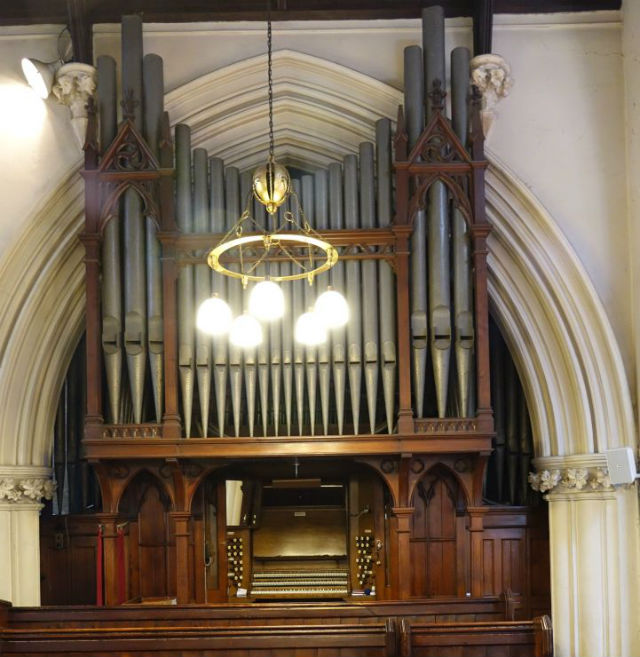
I remember being surprised at the extra pressure of touch required by the tracker action, in comparison to the lightness of the Nicholson’s new electric keyboards – though, fortunately for me, my first exam (Grade 4) was taken at Abbots Langley. When I eventually got to Grade 8, and needed a three-manual for the Franck and Langlais I had chosen, I used the (now replaced) Bishop instrument at St Peter’s Church, St Albans (NPOR survey here).
College Days at Lady Margaret Hall
I applied to read a music degree at Lady Margaret Hall, Oxford. The choice of Oxford was simply for the chance to be involved in the wonderful choral tradition, this being many years before choral conducting was available as a course at music conservatoires. The plan having worked, I ended up assisting the then Organ Scholar for twice-weekly choral evensongs on the 1934 two-manual, 15-stop Harrison & Harrison (NPOR survey here), and was subsequently awarded a Scholarship myself.
The chapel at LMH is a rather special space, and atypical of Oxford college buildings. Designed by Sir Giles Gilbert Scott, it is a brick building dating from 1933 in Byzantine style. With a high roof topped by a shallow dodecagon acting as a dome, and a simple, light and airy interior, the acoustic is generous.
The organ sits on a gallery at the west end from where its modest specification fills the space well; in addition, the Swell features what I then considered to the be best, silky-smooth, English-style strings in Oxford – perfect for Howells Coll Reg and the like. But little did I expect then that I would choose to be married in the chapel a decade later.
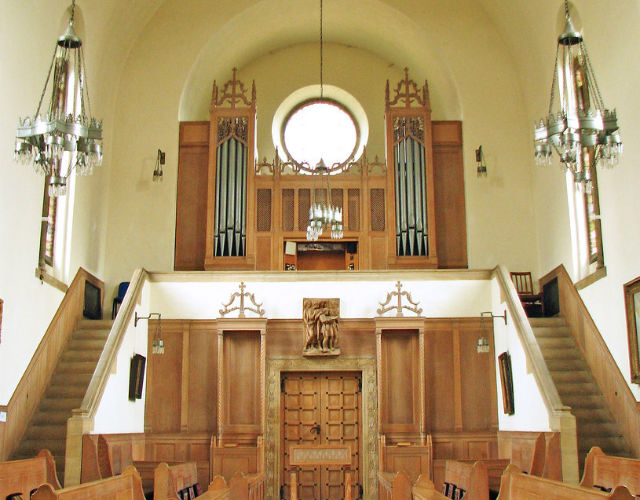
Return to Hertfordshire and a refurbished pipe organ
Following graduation and a spell teaching in Oxfordshire I returned to Abbots Langley where my first main church appointment was at St Mary’s, Watford Parish Church, in 1989. At the time I arrived the church’s 1935 Walker organ, sited in the north transept, had been removed due to major work taking pace on the roof, affording the opportunity for a refurbishment by Hill, Norman & Beard. Therefore, for the first few months I found myself leading services on a temporary two-manual extension instrument loaned to the parish!
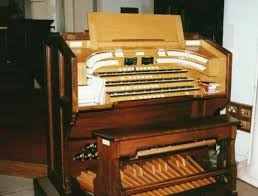
The original Walker tonal scheme was retained by HNB with a few additions (NPOR survey here). The elegant horseshoe console was upgraded with a Christie electronic transmission featuring a record and playback facility, and removed from its previous “pit” on the south side of the chancel and mounted on a new mobile plinth.
I stayed at St Mary’s when I first joined the RSCM, until the weekly commute back to Watford from Croydon became too much of a strain.
Move back to Oxford and St Mary’s Church, Kidlington
My next permanent church appointment came a few years later in the mid-1990s and coincided with a move back to Oxford and from the RSCM to the world of Yamaha orchestral instruments and pianos. An old college friend had been organist at the medieval church of St Mary’s, Kidlington for several years; and, having sung for him there on various occasions, I was well-placed to take over the playing when he left.
The organ at St Mary’s is unusual, in having been reconstructed from an earlier Willis in 1976 by volunteers led by a young Oxford academic Richard Vendome, and a young Paul Hale (NPOR survey here). It sits on a loft in the north-west corner of the nave and, with mechanical action and no piston system, was obviously a great contrast to the Watford Walker – especially with the horizontal Chamade directly overhead!
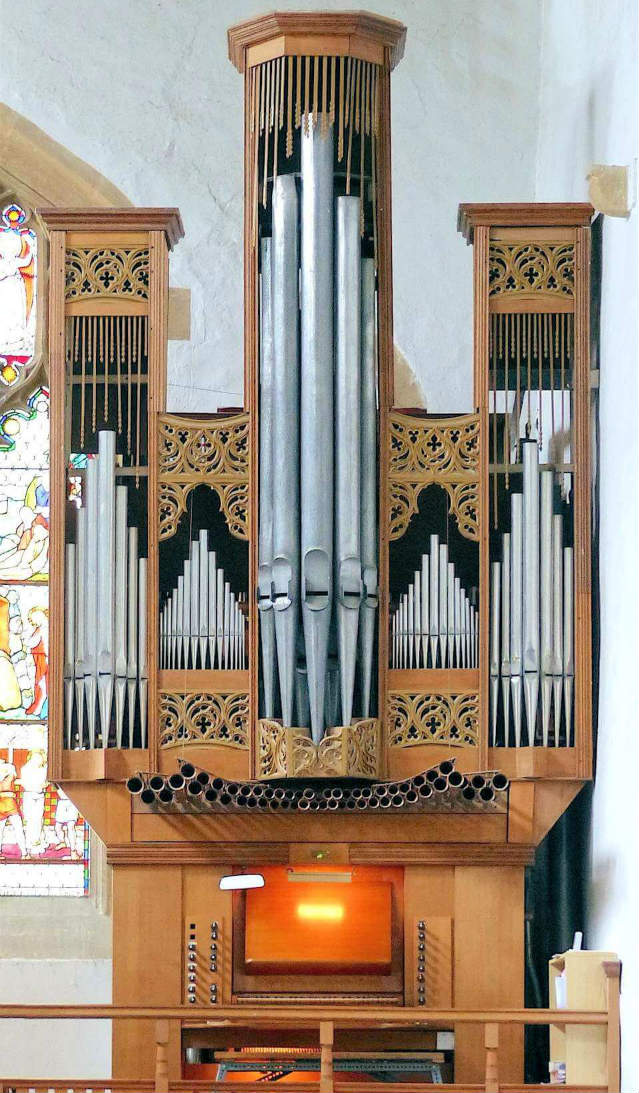
My present appointment at St Margaret in Oxford
I left Kidlington as we started a family then, spent several years deputising locally while we joined the child-friendly church of St Margaret in north Oxford. In 2003, I was appointed Organist and Choir Director there.
The church is fortunate in having two organs: the first (main) one is originally by Hill and occupies a purpose-built chamber on the north side of the chancel; the other is a small two-manual by Rothwell of Harrow (NPOR survey here), situated in the north aisle of the nave, found for the church in 1985 with the assistance of Lady Susi Jeans.
The Hill organ had had its tracker action replaced by tubular pneumatic in 1921 by PW Phipps (NPOR survey here). Mechanical problems and wind leaks had been occurring over many years prior to my appointment and, when I took up the reins, a project for an extensive restoration had already been set in motion.
In 2006 the instrument was completely rebuilt and enlarged by Nicholson & Co (NPOR survey here), including the replacement of the original “swallows nest” console with a new mobile one, better to serve the main worship in the nave. The new Nicholson speaks far more clearly into the body of the church with a now west-facing Great while, through retaining the Hill sound, also suiting perfectly the mainly Anglican repertoire sung by the choir.
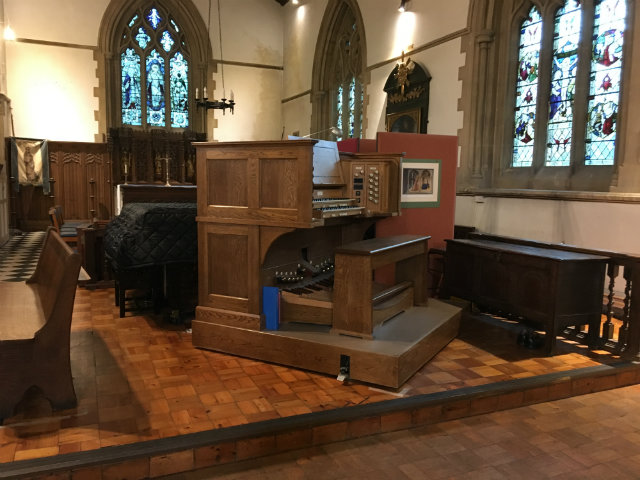
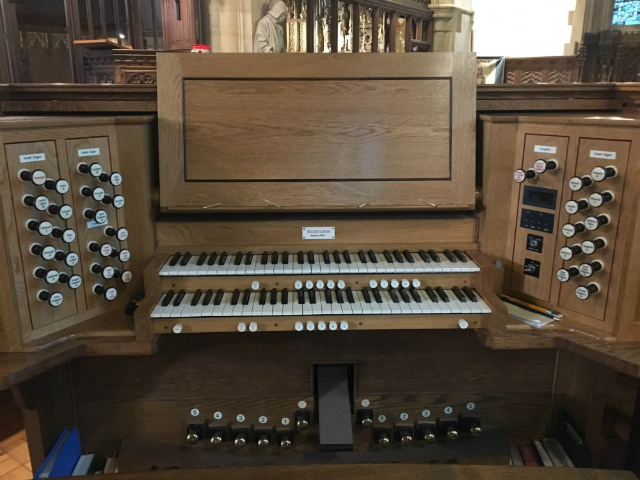
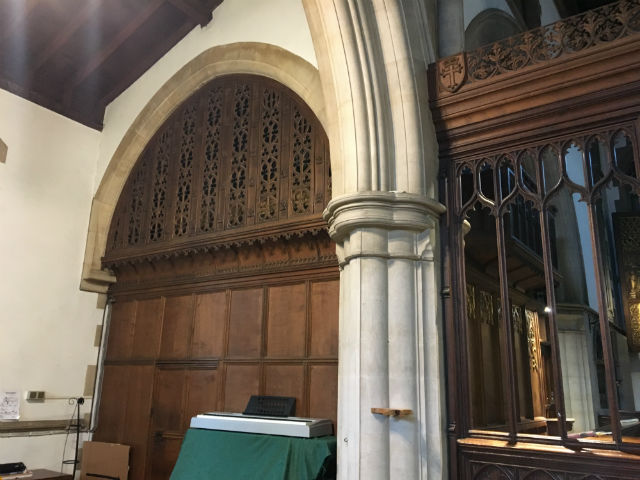
Interactive 3D Tour enhances the experience
To conclude, below is a 3D interactive tour of St Margaret’s Church. You may have already seen our tour of the Viscount showroom so, at David’s suggestion, I made the 3D survey of St Margaret’s to showcase how this exciting technology might enable us to make the best assessment of a building for the installation of a new organ.
We will use this imaging technique, as appropriate, in our future church visits. Then, from the 3D model we create – we will have a permanent representation of the space. This helps us a lot when discussing the size and location of a new instrument with church representatives, including critical detailed planning of the speaker installation and cable routing.
We hope that you will enjoy this example of the superb technological facility we have at our fingertips to enable Viscount to give the best advice to churches and other venues looking for an organ.
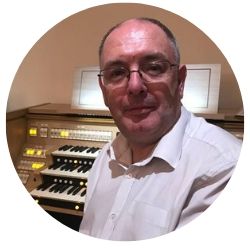
Richard is based part-time in our Bicester head office, also being a freelance organist in the Oxford area. He comes to Viscount with many years’ experience in the digital organ industry having worked previously for the Royal School of Church Music in its Addington days. Richard has been organist and choir director at St. Margaret’s Church, Oxford for the past fifteen years.
